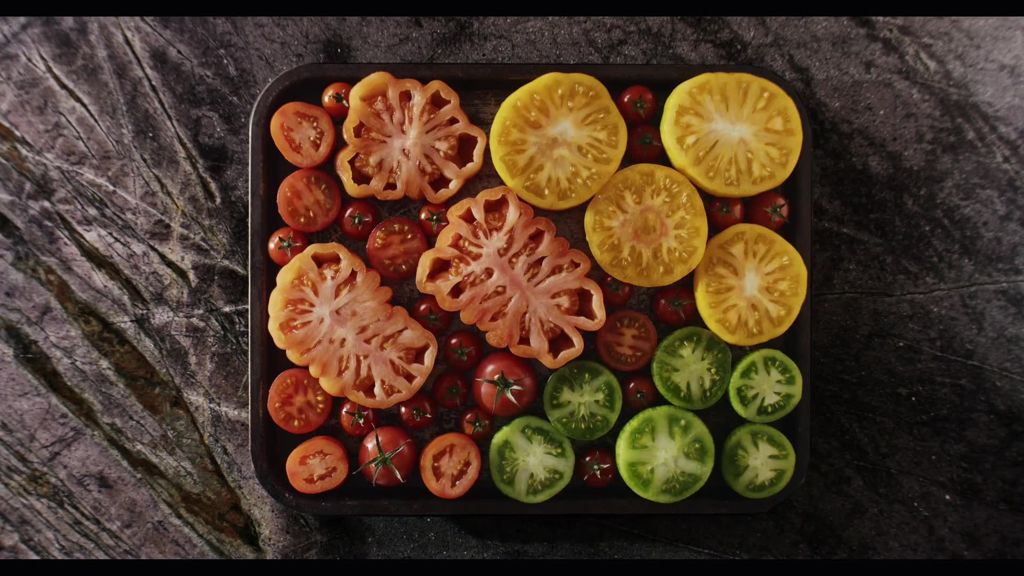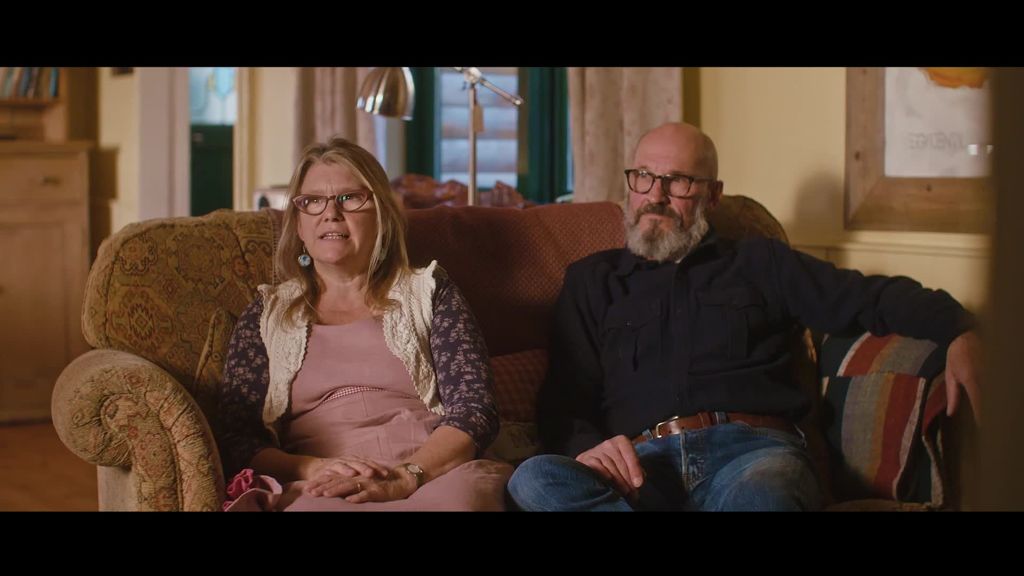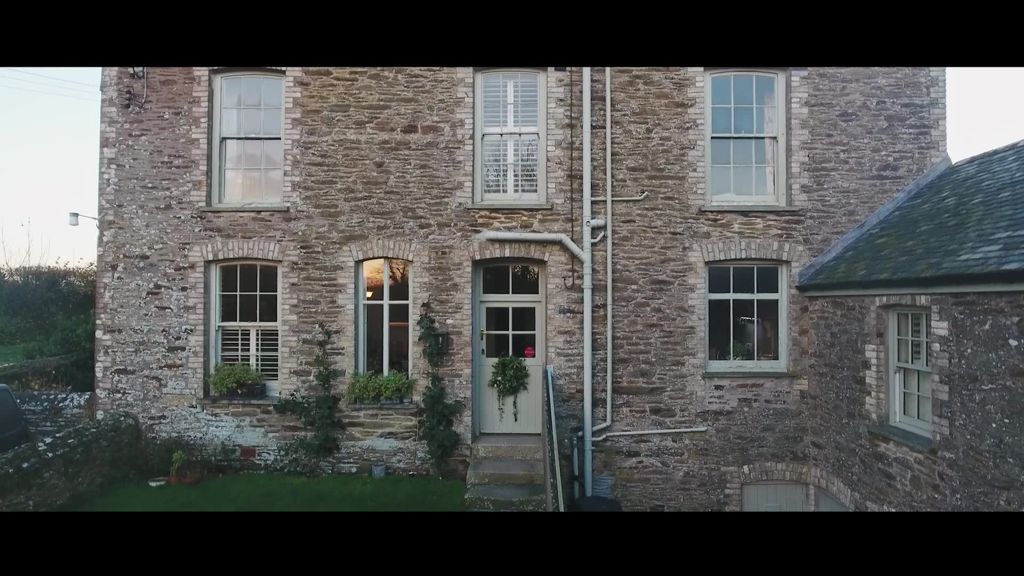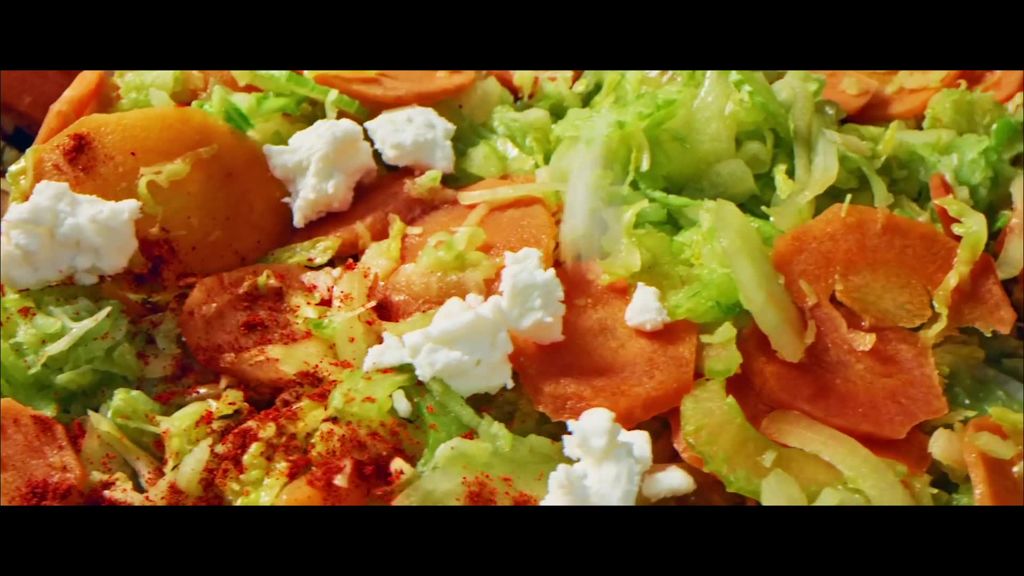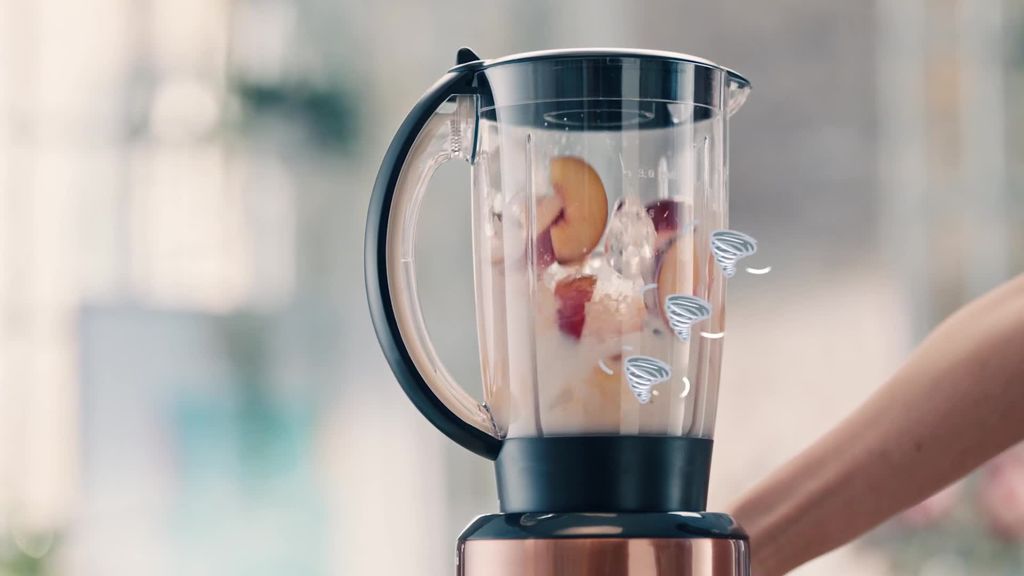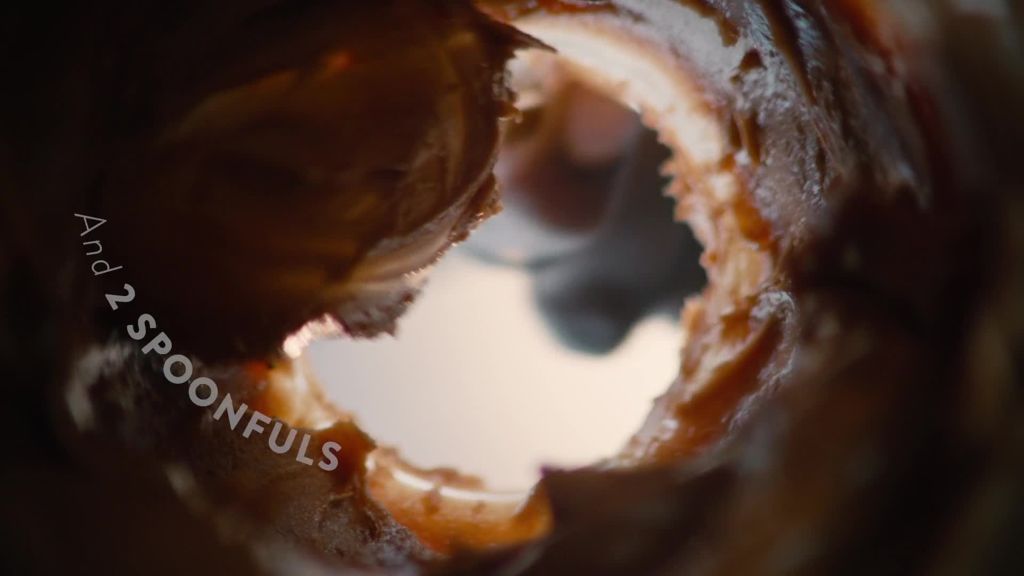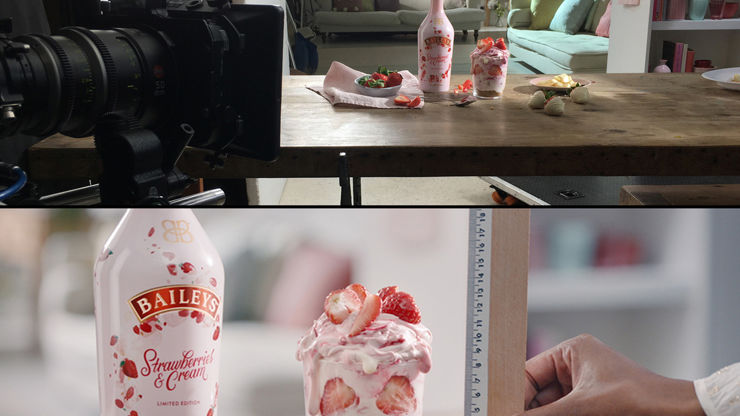A tabletop director gives us a taste of filming food
Tabletop director James Lovick, who's been an integral part of Kenwood's newest recipe campaign, answers some of our questions about the niche and technically demanding craft of food film.
Director James Lovick has had a few different tracks to his career, moving from documentary to short-form narrative, but his speciality now lies in combining a filmic aesthetic with food shorts.
The deliberate, crafted technique of both storytelling and food advertising is difficult to master, not least because the product is the most important part of the film. We've asked Lovick about how he balances both narrative and elegant food design, and some tricks that make for phenomenal food film.
What draws you to tabletop direction?
Before I became a tabletop director, my career in film was all about documentaries. Now my life is split between the two disciplines. I was looking for something to counteract the sporadic nature of documentaries; quite often you are following the action as it happens. You are reacting to a situation or capturing elements on-the-fly. Tabletop and food couldn’t be further from this. Everything is meticulously thought through and planned. Having that balance in my work keeps everything fresh.
Can you explain the process for one of your shoots with food?
There’s no set process because each job varies hugely with its specific requirements. But as a general rule, once we’ve got the script locked in, we normally do one or two test days where we are stress-testing the look, recipe, styling and any particular ‘trick shots.’ These particular shots are then tested, tested and then tested again. You want to be going into the shoot knowing exactly how to create that perfect wave, tumble, explosion, etc.
There are the impromptu moments when the food just behaves itself on camera and you get a delicious explosion or drip that lands perfectly
Another area that has a lot of attention paid to it is the client’s packshot – it doesn’t really matter what the rest of the film looks like if the client isn't happy with how their product looks at the end. So we always make sure to sign off the look and styling of the packshot as much as possible prior to the shoot. The testing phase before a shoot is so important, but you always want to allow for that vital ingredient within the final films that you can’t plan for. The odd crumb or drip of chocolate that makes a break for freedom. Those are the elements that add the extra special touch.
James Lovick – Food Demo - The Classics
Dorset Cereals – Dorset Cereals: "B&B Awards - Ponden Hall: Friendliest Hosts"
Dorset Cereals – Dorset Cereals: "B&B Awards - Nantgwynfaen Organic Farm: A Dog's Best Friend"
Dorset Cereals – Dorset Cereals: B&B Awards - "Hay Barton A Breakfast Like No Other"
Above: Examples of food direction and documentary-style food storytelling
When working with your clients, how do you bring across your vision as well as your talent?
Sometimes the brief is incredibly strict, but quite often it’s not! A lot of my clients have a recipe or dish that they know they want to create, but how you get to the finished product is kind of up to me and my team. My work with Kenwood recently has been like this. It's great having so much freedom. For the films I produce for them, I sketch out some storyboards with rough ideas for how the films will flow and any feedback or specific elements of their products are worked into the narrative.
If you do film during a food service, my advice would be to not get in the way.
Other times, when the client has a fairly specific set of requirements or shots they want you to get then my focus shifts into, "how can we make this look the best it can be." So we’re thinking about lens choices, styling elements (extra drips, condensation, steam, etc) to make the food look the most indulgent.
What was the longest food shoot you’ve ever done?
The long ones tend to be when we are combining several films into one shoot. Last year, I shot eight Kenwood films back to back over the course of one week in a studio in North London. I think by the end of the week everyone was going a bit cross-eyed!
Kenwood – Feed Your Imagination
Kenwood – Spanish Empanadas
Kenwood – Sweet Potato Nachos
Kenwood – Burrata and Anchovy Pizza
Above: Lovick's recipe movies for Kenwood Appliances
Are there any tricks that you have up your sleeve when shooting food?
Yes! A few, that’s one of the things I love about shooting food is finding new and inventive ways/angles to capture the action. I’ve got a bunch of lenses that are now in my go-to kit that give you a macro world view on everything. Again though, it totally depends on the brief. I had a really interesting one recently which meant we had to try and work out a way to send the camera through a glass filled with ice as liquid was poured over the top.
We think about lens choices, styling elements (extra drips, condensation, steam, etc) to make the food look the most indulgent.
It involved us talking to model makers to get oversized glasses and ice made and using a macro probe lens that is waterproof. Those sorts of technical challenges are my favorite to try and work out how to make them happen!
How hard is it to capture someone taking the perfect bite?
Haha! Sometimes it’s super easy… and at other times it can be a bit of a nightmare! I’ve learned that the hard way very early on when I started shooting food when one of our actors told us they didn’t like anything we’d been cooking and when they took a bite on screen it looked like we’d asked them to eat something we’d found in the bin! A mixture of disgust and contempt!
In tabletop everything is meticulously thought through and planned.
All part of the learning curve, so we now always ask our talent whether they like the recipe before we get them on board for the shoot. I always look for people who naturally cook for themselves or are ‘foodies’ as well. You can tell on-screen when someone is comfortable chopping food or handling ingredients. You want that level of confidence to come through in the film.
Kenwood – Raspberry Mocha Parfait
Kenwood – Fougasse
Kenwood – Berry Pizza
Above: Lovick's recipe movies for Kenwood Appliances
How do you film food cooking?
There’s not a single answer as each job requires you to use different skills of technique to achieve what you are after. Forward planning is key though – working out how each shot is going to flow from one to the next without jarring so you create this rhythm and continuous movement through the film that doesn’t distract from the action.
Working out a way to achieve a high end looking set on-budget that exceeds expectations is awesome.
Once we’ve got our script locked down, then we can work out what tools we need to get the shots – there are companies that specialize in transparent ovens, bottomless mixing bowls, backless fridges, etc, so when thinking up shots it's exciting to try and place the camera and viewers POV in places you wouldn’t normally expect to.
What technical details require practice, tricks, or clever workarounds?
Well, for example, in all my Baileys work I try to keep as much of it as natural as possible. To make this achievable, the all-important testing phase that I mentioned before allows us to negate a lot of the errors that you could discover the first time around.
I always look for talent who naturally cook for themselves or are "foodies."
So to get the perfect ice cream roll, we’ve tested the technique and camera setup multiple times beforehand. Then when it comes to it, we can get several good takes until we get the one that makes everyone go ‘Ooooooooooo….’ on set! There are advances in tech as well that I’m excited to use more on my shoots – new plasma lighting that generates no heat but produces huge amounts of light, allowing for super slow motion shots.
Bailey's – Bailey's Showreel
Baileys – St Patrick's Day Shake
Baileys – Almande Peach Smoothie
Baileys – Peanut Butter Cuppa
Baileys – Sweet Volcano
Above: Lovick's Baileys commercials
What was one of your favorite moments on set?
Ah, that’s tough! I always get a kick out of seeing a plan come together – when you push the client to take a leap of faith with the set design and they are really happy with how it looks. I’ve created bars and cafes for Baileys that started off as nothing more than a couple of sketches on paper. Working out a way to achieve a high end looking set on-budget that exceeds expectations is awesome.
Then, of course, there are the impromptu moments when the food just behaves itself on camera and you get a delicious explosion or drip that lands perfectly. You can’t plan for those though - they have to just happen by themselves and you put them down to luck rather than anyone’s super skill!
Above: Behind the scenes imagery from the Bailey's shoots
Have you ever filmed in a working kitchen, during dinner service?
Filming during a real working dinner service is tough – creating beautiful food on a large scale for multiple covers is an art form. I couldn’t do it…the pressure is intense. If you do film during a service, my advice would be to not get in the way. Make yourself as invisible as possible and work with what you have. Anytime I have filmed with a working kitchen it’s been in a documentary and observational fashion, capturing chefs in amongst the carefully choreographed chaos!
)


